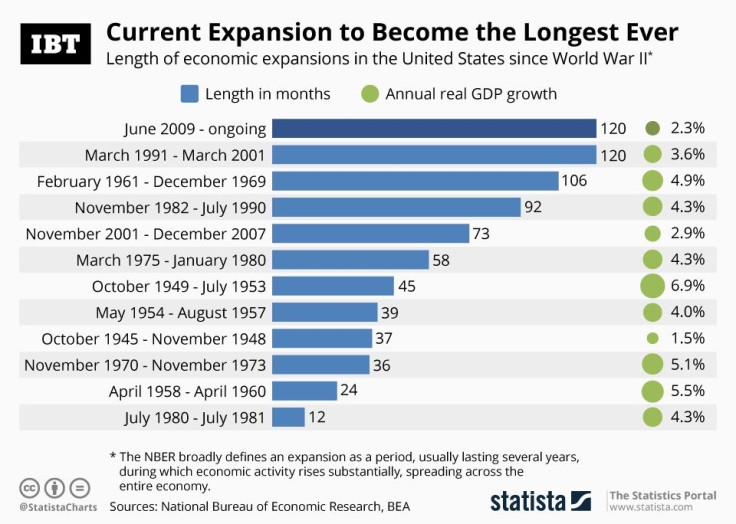Infographic: Length Of Economic Expansions In The US Since World War II

On September 20, 2010, the National Bureau of Economic Research (NBER), the semiofficial chronicler of economic cycles in the United States, announced that June 2009 marked a trough in business activity signaling the end of the recession that began in December 2007 and the beginning of an expansion. Identifying the date of a trough/peak in economic activity is a complex task carried out by the Business Cycle Dating Committee, a panel of 10 renowned economic researchers, that involves weighing the behavior of various indicators to pinpoint turning points in economic activity as accurately as possible.
Ever since the September 2010 announcement, the Committee has been remarkably quiet, mainly thanks to the fact that the expansion that started in June 2009 is still ongoing and thus on track to become the longest one ever. “If the United States makes it past July 1 without a recession, the current economic recovery will turn out to have been the longest in American history”, James Poterba, Professor of Economics at MIT and President of the National Bureau of Economic Research, said in an interview with the New York Times earlier this month, only to add that “we won’t know on July 1 that we are not already in a recession”. So while the probability of July marking the 121st month of what would then be the longest expansion in history is high, we’ll have to wait a couple of months for the Business Cycle Dating Committee to review all relevant data until we can pop the champagne.
As the following chart shows, the current expansion is already the joint leader for the longest ever, matched only by the expansion that lasted from March 1991 to March 2001 and culminated in the bursting of the dot-com bubble. While it may soon be the longest, the current expansion certainly isn’t the strongest in history. With average annual GDP growth of 2.3 percent, the ongoing upturn is in fact the second slowest since the end of World War II.




















